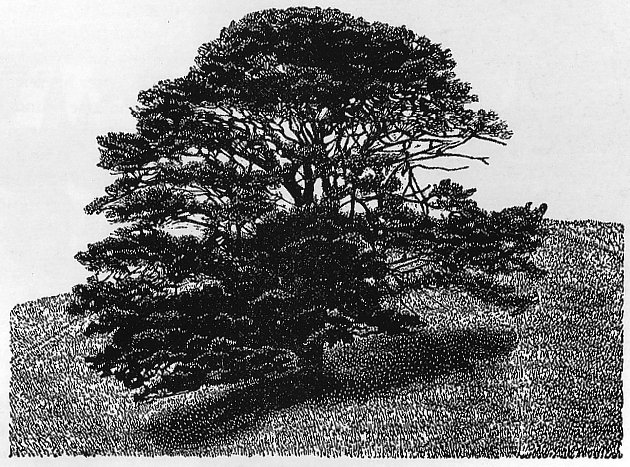Land
The problem of access to land is fundamental and acute. The self-reliant localities of the future will need land; including in the less industrialised nations, whose small farmers have lost their land to the large-scale agriculture of the global market. Land is in many ways the hardest problem of all. Depending of course on the size of the population, the demand for land can be expected to exceed supply. Most wars, including civil wars, are about land. The land problem is a wicked problem.L1
One interesting person to chew these things over with is Ebenezer Howard, the man behind Social Cities at the beginning of the last century. He relished the unlikely. He had to face up to the improbability of reorganising a landscape whose essential structure had already been laid down. With their drainage and sewerage systems unalterably settled, and their physical structure and railways already built, existing cities could not be adapted to the latticed pattern he proposed. He was no incrementalist; his solution was simple and outrageous: the only thing to do is start again “on a bold plan on comparatively virgin soil . . . ; and when that simple fact is well grasped, the social revolution will speedily commence”.L2
That solution is not available to us now; Howard was lucky. The depression in agriculture was so deep that, in 1919, he was able to pick up the land on which Welwyn Garden City would be built for a mere £34 an acre (£800 at 2001 prices). The deposit was raised at speed over a cup of tea at King’s Cross with the chairman of the Garden Cities and Town Planning Association, and the rest of the money—£50,000 (£11 million at 2001 prices)—was raised or promised in a hasty cab ride round the City of London.L3
The population of England and Wales was smaller too—about 600 people per square mile compared with 900 today—living in larger households, with minimal land devoted to roads and no land at all given over to airports and out-of-town shopping centres: this was a landscape with space. There were even patches of common land which had escaped the Enclosures, which local people could use as a basis for subsistence. And the First World War brought the land of families with no surviving heirs onto the market. In those days, H.G. Wells’ Mr. Polly could walk and cycle for days in the empty roads of Kent, crossing misty meadows by moonlight, meeting almost nobody.L4
But that all changed with the road building, the smaller households, the higher population and the industrialised agriculture which started tentatively in the second quarter of the century, and became established in the third.
If Howard’s book had been published closer to the present time, its hopes of taking advantage of cheap land for a massive programme of resettlement would have been thin. And much of the landscape in the market economy is so worn, contaminated, entombed in concrete and lacking in living social capital that there is no happy future for it anyway, short of a completely fresh start.
And yet, despite several centuries in which open land in cities—such as the Marais of Paris and the canalside kitchen gardens of Amsterdam—have been buried under streets, some remains for lean production. There is a remnant of gardens, allotments and parklands; and almost any land can be used as the hard standing for intensive raised beds, glasshouses and renewable energy systems. Flat roofs have potential, as do the top floors of multi-storey car parks. Earth-filled tubs can make use of hard surfaces in gardens and on fire escapes. Demolished office buildings in the cities will yield unused space ready for partial reclamation; the deep rafts of poured reinforced concrete on which they stand will be hard to reclaim, but there are solutions even for this, such as building up the level with mixtures of prepared demolition waste and organic matter, after which it is possible to begin to restore the land with trees.L5
So ingenuity in the use of space has a contribution to make, but with current populations most urban settings will still fall well short of the food-growing land needed per person, even with significant reductions in waste, and will remain reliant on food being trucked in every night. What we must hope for, then, is optimistic continuity: not a climacteric, but a gentle nudge. And yet, ingenuity is never wasted, and we cannot afford to be demoralised by the evident shortage of land. We do not know how much land there will be per capita, especially if we are thinking of it as a problem common to all nations with large cities; we do not know how much the sea will claim; nor how much will be lost to drought; nor the size of the population. It will be factors like these that decide whether land-famine and conflict over land can be expected, and how intense it will be.L6
Maybe we can take comfort from Leopold Kohr’s claim that a shortage of space can have something to be said for it, in that it stimulates the evolution of diversity and detail. If limits are well-defined, “the rest can be left to the forces released by implosion”: social energy is concentrated by lack of space—as in a pressure cooker—and organic form evolves in response; in the end, everything is squeezed into the place where it belongs. That seems optimistic, too, but there may be something in it: the productivity of intensely labour-intensive attention to detail in the cultivation of food can be spectacular.L7
Related entries:
Social City, Proximity Principle, Commons, Access.
« Back to List of Entries